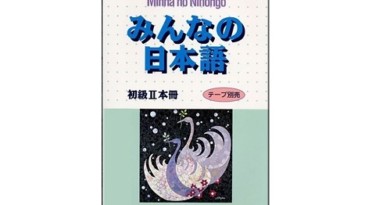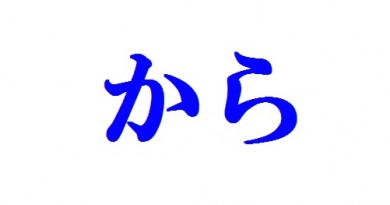Contents
- 1 Learn minna no nihongo lesson 17
- 1.1 6. Mondai
- 1.1.1 Exercise 1: Listen and answer questions
- 1.1.2 Exercise 2: Listen and choose true or false
- 1.1.3 Exercise 3: Give the true form of the verbs in the table below
- 1.1.4 Exercise 4: Choose the words from the box, give the true form and fill in the blank
- 1.1.5 Exercise 5: Give the true form of the verbs below
- 1.1.6 Exercise 6: Read the following paragraph and choose true or false
- 1.1 6. Mondai
Learn minna no nihongo lesson 17
6. Mondai
To do the “Mondai” section, you need “minna no nihongo” book and audios for listening
Exercise 1: Listen and answer questions
With this exercise, you will hear the questions and answer. When listening, stop for 30 seconds to 1 minute in each sentence to write the answer. With the questions that you don’t hear clearly, listen them the second time. After listening 1 or 2 times to answer the question, you can listen again to hear each word clearly and copy it to improve your listening skill and remember words better.
1.
(What do I have to bring when I travel abroad?)
2.
(How old are children in your country to be able to go to school? )
3.
(What time do you have to get up every morning?)
4.
/いいえ、出かけなくてもいいです。
(Do you have to speak Japanese everyday?)
/ いいえ、話さなくてもいいです。
Exercise 2: Listen and choose true or false
With this exercise, the listeners will listen to the conversation, then there will be a key point about the problem that will be raised in the conversation. The listeners must choose whether the content is true or false according to what they has listened. If it is true, select 〇 (maru) and if it is false, choose ✖ (batsu). In this listening section, you should pay attention to the concluding sentence to see whether that sentence is given in a positive or negative form in order to avoid being “tricked” when listening.
1.
女:きれいですね!あの花の前で写真を撮りましょう。
Kireidesu ne! Ano hana no mae de shashin o torimashou.
(It’s beautiful! Let’s take photos in front of those flower.)
男:あ、すみません。そこに入らないでください。
A, sumimasen. Soko ni hairanaide kudasai.
(Excuse me. Please do no enter there.)
女:あ、すみません。
A, sumimasen.
(Ah, I’m sorry)
花の写真を撮ってはいけません。(Can not take photos of flowers.)
Answer:(✖)
2.
男:今晩いっしょに食事に行きませんか。
(Shall we go for a meal together tonight?)
女:すみません。きょうは早く帰らなければなりません。
(I’m sorry. I have to go home early today.)
男:そうですか。残念ですね。
(Is that so. What a pity.)
女:また今度お願いします。
(Next time, okay?)
女の人はきょう食事に行きません。(The woman will not go for a meal today.)
Answer:(〇)
3.
男:先生、おふろに入ってもいいですか。
(Doctor, can I take a bath?)
女:いいえ、きょうは入らないでください。それから、2、3日スポーツはしないでください。
(No, please do not take a bath today. And please do not play sports for 2 or 3 days.)
男:はい、わかりました。
(Yes, I got it.)
きょうはスポーツをしてはいけません。(Can not play sports today.)
Answer:(〇)
4.
女:この薬は朝と晩、ごはんを食べてから、飲んでください。
(Please take this medicine after eating in the morning and evening .)
男:昼はいいですか。
(What about the noon?)
女:ええ、昼は飲まなくてもいいです。
(You do not have to take medicine at noon.)
男:わかりました。
(I got it.)
男の人は1日に2回薬を飲まなければなりません。(The man have to take medicine twice a day.)
Answer:(〇)
5.
女:あしたの朝は何も食べないでくださいね。9時までに病院へ来てください。
(Please don’t eat anything tomorrow morning. Come to the hospital by 9:00.)
男:あのう、飲み物は飲んでもいいですか。
(Then, can I have a drink?)
女:飲み物もだめです。水も飲まないでください。
(Drinks are no good. Don’t drink anything even water.)
男:わかりました。
(I got it.)
男の人はあしたの朝、何も食べてはいけませんが、水は飲んでもいいです。
(The man can not eat anything tomorrow morning but he can drink water.)
Answer:(✖)
Exercise 3: Give the true form of the verbs in the table below
| 例: | 読みます | 読まない |
| 1 | 行きます | 行かない |
| 2 | 脱ぎます | 脱がない |
| 3 | 返します | 返さない |
| 4 | 持ちます | 持たない |
| 5 | 呼びます | 呼ばない |
| 6 | 入ります | 入らない |
| 7 | 払います | 払わない |
| 8 | 忘れます | 忘れない |
| 9 | 覚えます | 覚えない |
| 10 | (6時に)起きます | 起きない |
| 11 | 借ります | 借りない |
| 12 | 見ます | 見ない |
| 13 | します | しない |
| 14 | 心配します | 心配しない |
| 15 | (日本へ)来ます | 来ない |
Exercise 4: Choose the words from the box, give the true form and fill in the blank
1. 危ないですから、そちらへ ( ) ください。
2. この資料は大切ですから、 ( ) ください。
3. 寒いですから、窓を ( ) ください。
4. 熱がありますから、おふろに ( ) ください。
5. 寮の生活は楽しいですから、 ( ) ください。
Exercise 5: Give the true form of the verbs below
1. 肉や魚は冷蔵庫に( 入れます → )。
2. あしたは病院へ( 来ます → )。あさって来てください。
3. 日本のうちで靴を( 脱ぎます → 脱がなければ なりません )。
4. 本を( 返します → )から、これから図書館へ行きます。
5. レポートは きょう( 出します → 出さなくても いいです )。来週の月曜日までに出してください。
Exercise 6: Read the following paragraph and choose true or false
日本語の試験
⑤ 答えは鉛筆で書いてください。ボールペンは使わないでください。
Translation
December 9th (Monday) : 9 am-12:00 am
1. Please enter the classroom before 8:40.
2. Please look at the number of the desk and sit at your number.
3. Please put only a pencil and an eraser on the desk.
4. “Exercise” have a total of 9 sheets. Please write your number and your name on the top of the paper sheet.
5. Please write your answer with a pencil. Please do not use a ballpoint pen.
1.( 〇 )
(You have to come to the classroom before 8:40.)
2.( 〇 )
(Check the number of the desk and sit down.)
3.
( ✖ )
(You can put your bag on the desk.)
4. ( ✖ )
(You do not have to write your number on the “Exercise” sheet.)
5.( 〇 )
(The answer must be written with a pencil.)
Above is instruction to Learn minna no nihongo lesson 17. See other lessons in category : learn Japanese with minna no nihongo or: Japanese for beginers.

